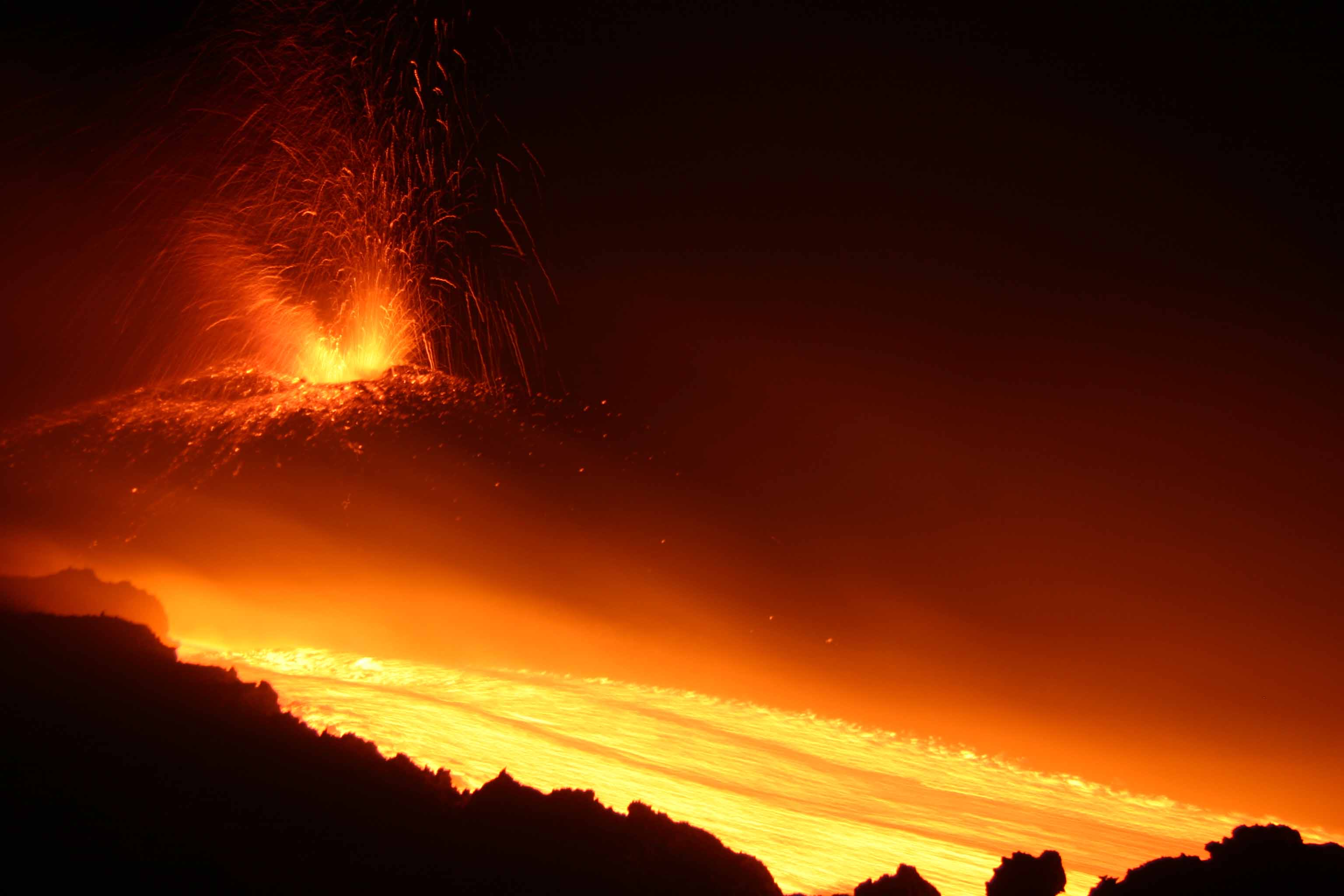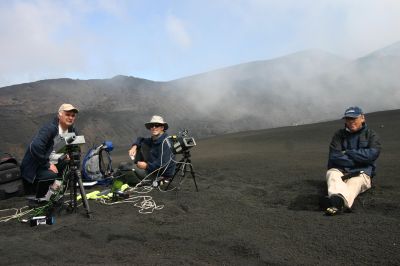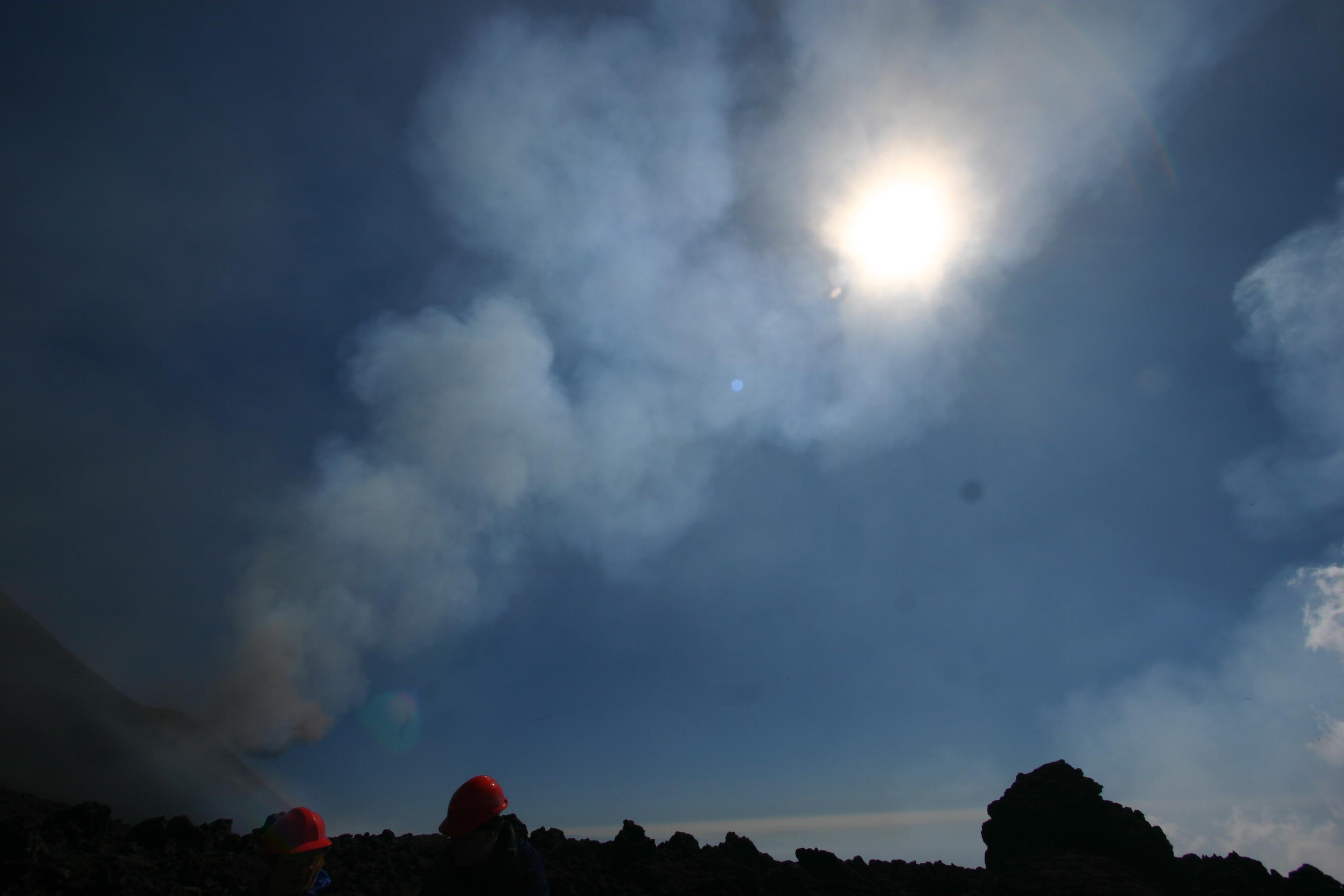News



Photographs courtesy of Dr. V. Tsanev
The Field Spectroscopy Facility supplied a GER 1500 spectoradiometer
and Microtops II sun photometers used by Dr. Tsanev of the University of
Cambridge for volcanic plume measurement on Mt. Etna during an eruption
Dr. Vitchko Tsanev and a group of volcanologists, atmospheric chemists
and spectroscopists from the University of Cambridge teamed up in July 2006
to carry out field measurements of the composition and evolution of volcanic
plumes (PI Dr. Clive Oppenheimer). The target volcanoes were all in Italy:
Vulcano and Stromboli islands, and Mt. Etna on Sicily. These three volcanoes
produce distinct brews of chemical effluent, at very different rates, and
released from only a few hundred metres above sea level (in the case of
Vulcano) to over 3000 metres into the 'free troposphere' (in the case of Mt.
Etna). This variation in activity and atmospheric environment makes it
possible to study environmental as well as volcanological controls on the
composition and evolution of volcanic plumes. One highlight of the fieldwork
was to arrive on Mt. Etna shortly after an eruption had begun. This provided
an unexpected opportunity to measure plumes containing ash as well as gases
and sulphate particles. The team used a range of instrumentation, including
two Microtops Sun photometers and a GER 1500 spectroradiometer on loan from
the NERC Field Spectroscopy Facility. These devices permit characterization
of the aerosol content of airborne plumes and, in the case of the GER
spectroradiometer, the possibility of measuring water abundances (water is
the primary volcanic gas). Other techniques were used to measure gas
composition and flux including UV spectroscopy and open-path Fourier
transform infrared spectroscopy, and prototype sensors for measurement of
ozone, sulphur dioxide and carbon monoxide. In addition, the team worked
alongside colleagues from the University of Oxford, and the Italian
Institute of Volcanology and Geophysics. The campaign has produced a large
dataset that is now being worked through.


 FOV Calculator
FOV Calculator







